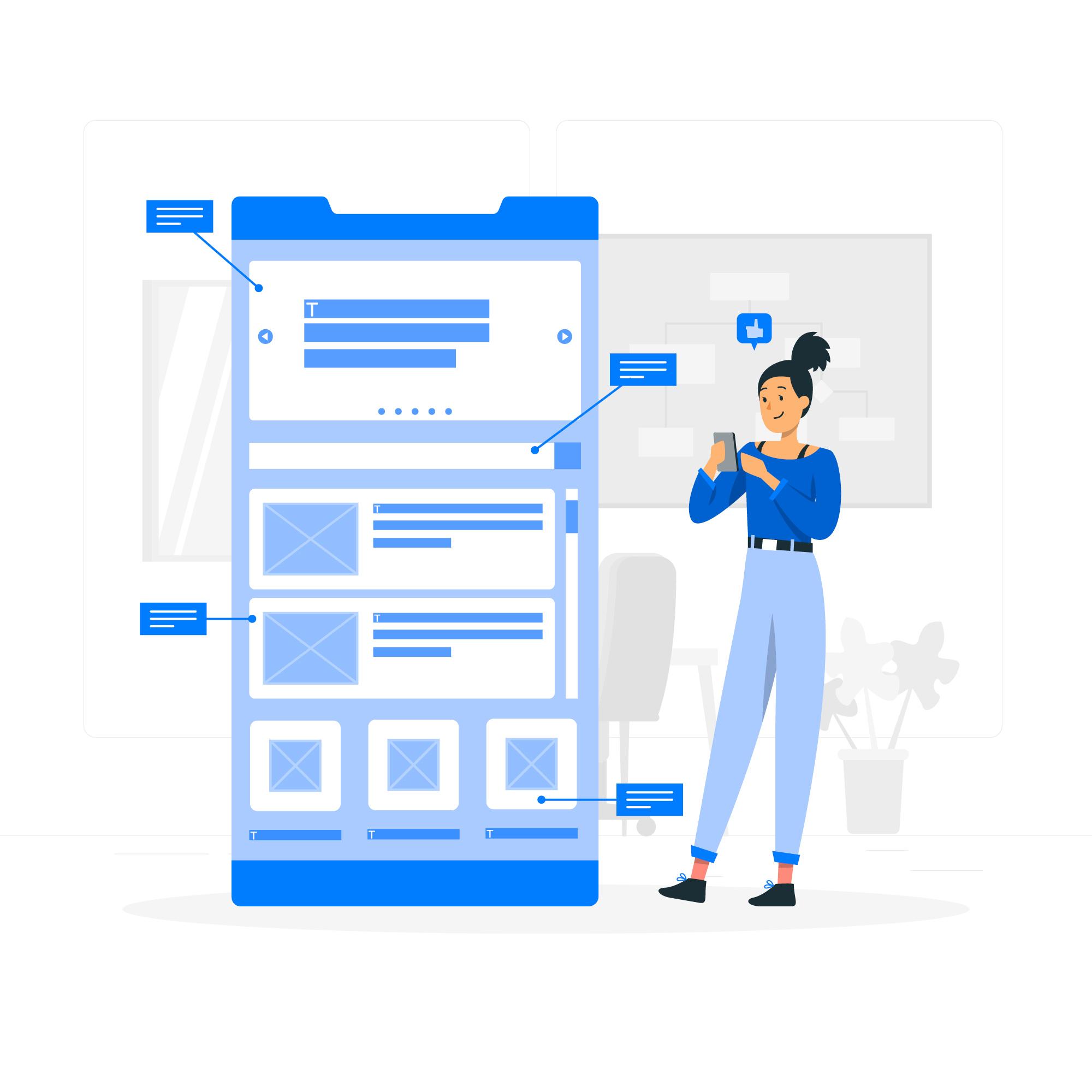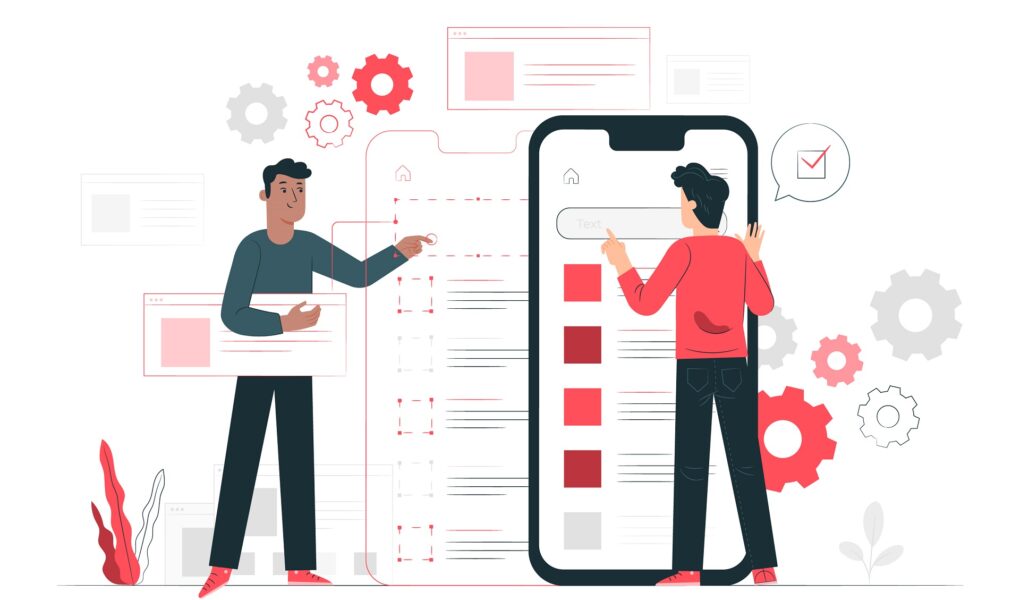In our online world today, websites aren't just digital pamphlets. They're platforms for helping businesses and customers meet. Although a good-looking site is nice, it's not everything. Websites need to make their users want to stay, enjoy, and come back.
This is where UX design tips for web developers become crucial partners for web developers. These tips help them create websites that really click with people and help achieve business targets.
The significance of UX Design in Web Development
Web design isn't just about looking nice. UX in web design digs deeper. It's about the whole journey, from when they first find you on a search engine to their last click on your site. UX thinks about what users want, how they feel, and what they expect. It then turns these into easy and fun interfaces. By prioritizing UX, web developers contribute to several key benefits:
- Increased user engagement:
Users prefer websites that are easy to use and efficient for their tasks. They spend more time exploring and discovering. Imagine finding a store that's neatly organized with helpful workers. You'd browse more and may end up buying, compared to a place that leaves you confused and annoyed.
- Improved conversion rates:
A smart website smoothly leads users to the actions they want, such as buying, subscribing to updates, or connecting with the business. Picture a simple, direct checkout process versus one with extra steps and puzzling forms. The former is much more likely to lead to successful conversions.
- Enhanced brand reputation:
A good user experience makes a long-lasting impact, encouraging brand trust and support. Think of a friendly store worker. They make you feel good about a brand. A website that understands your needs and makes things simple can build a powerful brand connection.
Core UX Design Principles for Web Developers
Every project is different, but certain principles shape effective UX design for web developers. These principles serve as the foundation for creating outstanding user experiences: usability, accessibility, visual hierarchy, consistency, and feedback/error handling.
- User-centricity:
To design effectively, empathize with users. Research their needs, goals, and challenges through surveys and feedback. Tailor designs to meet their needs, not your preferences. Creating personas helps visualize target users, ensuring designs are user-centered. Improve user experience for customers to create websites that resonate with your audience and drive engagement.
- Simplicity and clarity:
Keep things tidy and well-organized to help users find what they need effortlessly. Just like a neat store layout makes shopping easier, a clutter-free website enhances navigation. Clear information and intuitive navigation menus ensure visitors can quickly locate desired content, improving their overall experience.
- Consistency and predictability:
Maintain consistency in design, layout, and interactions throughout your website. This ensures users know what to expect, similar to the familiar layout of a grocery store. Consistent elements like buttons and menus enhance usability and make navigation predictable. Users can easily find their way around the site when design elements remain constant across different pages.
- Responsiveness and accessibility:
Ensure your site runs smoothly on all gizmos - computers, phones, and tablets. Be inclusive! Follow accessibility rules; this way, everyone, disabled or not, can navigate your site with ease. Catering to all devices and being user-friendly makes everyone's experience better, no matter their device of choice.
- Feedback and micro-interactions:
Offer clear feedback to users with loading indicators, success messages, and subtle animations. These micro-interactions add a pleasant touch and maintain user interest. Think of waiting in line without updates versus receiving progress notifications; the latter makes the wait more bearable. Feedback reassures users that their actions are being processed, enhancing their experience and reducing frustration. Incorporating these small details can significantly improve user satisfaction and engagement with your website.
- Content is king:
Deliver straightforward and pertinent content that meets user needs and expectations. Ramp up pictures and videos for top effects. Remember, a pretty website won't keep users if the content doesn't touch them or is tough to get. Aim for clearness and importance in your matter to make sure users can find what they need and stick around your site.
Practical Tips for Integrating UX Design into Web Development
 Using UX methods in your web crafting isn't just about getting the ideas—it's about making them work. Here are handy hints for coders on how to improve user experience on website and construct sites that really connect with visitors:
Using UX methods in your web crafting isn't just about getting the ideas—it's about making them work. Here are handy hints for coders on how to improve user experience on website and construct sites that really connect with visitors:
- Collaborate with UX designers:
Push for ongoing talk and unity among coders and UX experts from onset to end. This blend of tech skills and user-centric design views results in a well-mixed blend of functionality and user experience.
- Utilize prototyping tools:
Don't wait until everything is coded to get user feedback. Create interactive prototypes using tools like Figma or Webflow to test and refine user flows before coding, identifying potential usability issues early on. Imagine building a house without a blueprint; prototyping helps avoid costly mistakes later.
- Leverage A/B testing:
Experiment with different design elements and features. Figure out what users dig the most to improve performance. A/B testing gives you hard facts about what works and what doesn't. This helps you make smart choices to better user experience.
- Stay updated on trends:
Stay in the loop with the latest in UX design trends. This helps your website stay current and pack a punch. It’s like updating your phone's software for the best performance. Regular UX updates stop your website from falling behind and make sure it lives up to user standards.
- Focus on continuous improvement:
User experiences are always a work in progress. Use tools like analytics, surveys, and user testing results to guide your design revisions. Every website can be better. Constantly refining your site based on what users say helps it stay on point and do its job right.
Conclusion
Website UX tips are key to creating effective and engaging websites. When web developers put users first, success follows. However, good UX isn't a one-off task. It's constantly learning, tweaking, and improving your site to ensure users stay interested and your business keeps growing.
Related Posts
Ankit Agarwal, CEO of Dean Infotech, a premier Salesforce development company in the USA, boasts extensive industry experience and exceptional leadership. As a proficient Salesforce marketing cloud consultant, he drives company growth and operations. Through informative blog posts, he shares valuable insights in software development, Salesforce CRM, and entrepreneurship, engaging and educating readers.







